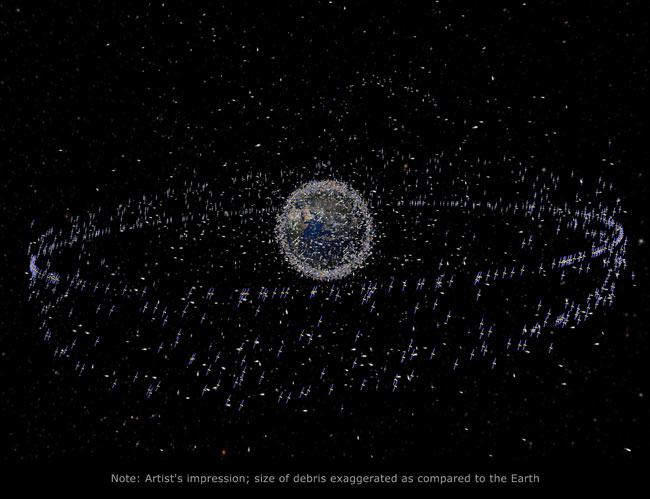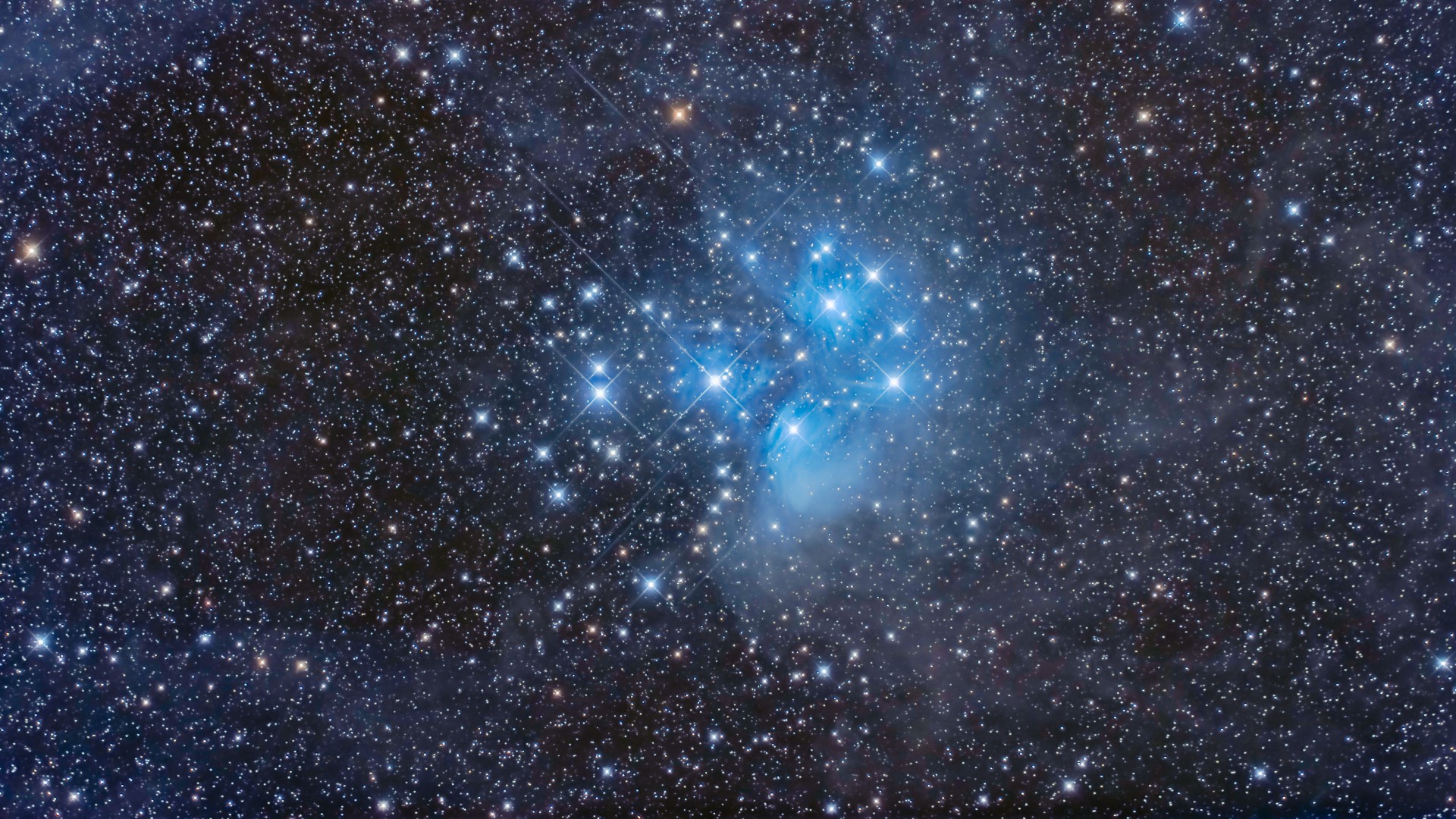
A small fleet of net-flinging spacecraft could clear every big piece of space junk out of low-Earth orbit within a dozen years, according to a researcher working on the concept.
Each spacecraft, known as an ElectroDynamic Debris Eliminator (EDDE), would capture orbital debris in a net, then drag the junk down out of harm's way. The EDDEs would draw their power from the sun and from Earth's magnetic field rather than rely on costly chemical propellants, helping keep costs down, said Jerome Pearson, president of Star Technology and Research, Inc.
And the cleanup of low-Earth orbit (LEO) could start happening soon, Pearson added.
"We're coming to the point where we have a design for a vehicle which could be very, very useful," Pearson said during a presentation with NASA's Future In-Space Operations working group on Wednesday (Aug. 31). "In a dozen years, we could get rid of all the old rocket bodies and all the old spacecraft." [Worst Space Debris Events of All Time]
EDDE's services may be sorely needed. A new report warns that there is already so much junk in space that humanity may have reached a "tipping point," in which collisions could start to increase exponentially, spawning more and more debris.
The space junk problem
Pieces of space junk — which may be defunct spacecraft, abandoned launch vehicles or fragments from satellite collisions — zip around Earth at speeds up to 17,500 mph (28,163 kph).
Breaking space news, the latest updates on rocket launches, skywatching events and more!
That's so fast that even tiny paint flecks can damage a spacecraft And there's a lot of this stuff, much of it larger and far more dangerous than paint flecks. NASA estimates that Earth's orbital debris cloud contains more than 20,000 pieces as big as a softball and more than 500,000 bigger than a marble. [How Much Junk is in Space?]
Those numbers are only going to keep growing, as humanity lofts more payloads and the pieces already up there collide with each other. In 2009, for example, a defunct Russian satellite and a U.S. Iridium communications satellite slammed into each other, adding at least 2,000 pieces of space junk to the total.
NASA and other organizations try to keep track of all this stuff, but the problem is getting so bad that many experts are calling for active intervention. To safeguard space assets and astronauts, they say, the United States and other nations need to start pulling some of the debris out of the sky.
And that's where EDDE comes in, according to Pearson. It has the potential to make a big difference in LEO, which houses many critical assets, including the International Space Station.
"Small-scale removal won't really make a difference," Pearson said. "We need wholesale removal of LEO debris to significantly reduce the risk."

A long, skinny spacecraft
Each EDDE spacecraft is essentially a series of nanosatellites connected by a very long piece of electrically conducting tape — up to 2 miles (3 kilometers) or so in length.
Solar arrays are dotted along the tape's length. At each end of the EDDE sits a "net manager" packed with nets, each of which expands to the size of a house when deployed. The entire EDDE spacecraft weighs just 220 pounds (100 kilograms), Pearson said.
As EDDE moves through Earth's magnetic field, a voltage is generated along the length of the conducting tape. This voltage drives a current, which operators use to push EDDE through space. It can move in pretty much any direction using this low-thrust propulsion system.
"What we do is, we change the angle of our conductor with respect to the magnetic field, so we get a force in the direction we need to go to change our orbit," Pearson said. "We're sailing on the magnetic wind."
An EDDE would sail right up to a big piece of debris — a defunct satellite, say — and snare the object in one of its many nets. Then EDDE would drag the junk down to a lower orbit, which would soon decay. The junk would burn up in Earth's atmosphere, and EDDE would move on to its next target.
The concept would only work up to about 1,200 miles (2,000 km) altitude or so, Pearson said, because Earth's magnetic field drops off rapidly after that. So the EDDEs would be restricted to LEO, unable to tackle junk in higher orbits.

Cleaning up LEO
LEO is cluttered with about 2,500 objects bigger than a softball (roughly 4 inches wide), Pearson said. This debris would weigh about 2,000 tons here on Earth.
A fleet of 12 EDDEs, once aloft, could de-orbit nearly all of this junk within seven years, Pearson said. He thinks the first full-scale, operational EDDE could be launched within five years, so that means LEO could be swept clean of large orbital debris by 2023 or so.
The price for getting this done would run about $84 million per year over the next 12 years, Pearson said. Since space debris is a global problem, that cost could be shared among a number of nations, he added.
There are some potentially tricky legal issues to work out, however. Under the Outer Space Treaty of 1967, the country that builds and launches an object owns it, and is responsible for it, indefinitely. So an American-built EDDE couldn't de-orbit a defunct Russian or Chinese satellite without getting permission first.
Pearson said EDDE would likely start by removing American space debris. But the ultimate goal is to sign agreements with other nations allowing EDDE to take the debris, and the responsibility for it, off their hands.
"If we can get agreements like that, then that should open the way for removing debris, no matter who put it up there originally," Pearson said.
While the EDDE concept is already pretty well developed, it needs some more funding to become a reality, Pearson said. But he's confident it will come through.
"I think we're on the verge of getting funded," Pearson said.
You can follow SPACE.com senior writer Mike Wall on Twitter: @michaeldwall. Follow SPACE.com for the latest in space science and exploration news on Twitter @Spacedotcom and on Facebook.
Join our Space Forums to keep talking space on the latest missions, night sky and more! And if you have a news tip, correction or comment, let us know at: community@space.com.

Michael Wall is a Senior Space Writer with Space.com and joined the team in 2010. He primarily covers exoplanets, spaceflight and military space, but has been known to dabble in the space art beat. His book about the search for alien life, "Out There," was published on Nov. 13, 2018. Before becoming a science writer, Michael worked as a herpetologist and wildlife biologist. He has a Ph.D. in evolutionary biology from the University of Sydney, Australia, a bachelor's degree from the University of Arizona, and a graduate certificate in science writing from the University of California, Santa Cruz. To find out what his latest project is, you can follow Michael on Twitter.
